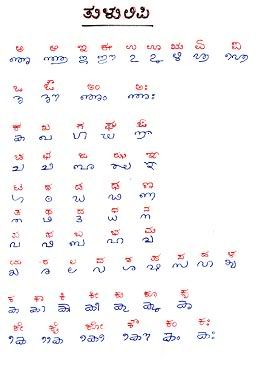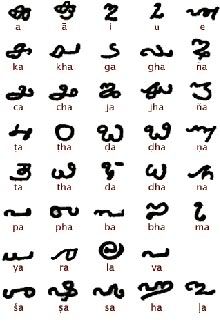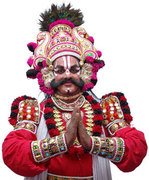Namma Tulunad
Tulu is a region on the south-western coast of karnataka, India. It consists of the Dakshina kannada and Udupi District. Tulu Nadu was a part of ancient Kerala which stretched from Gokarna to Kanyakumari. The northern part of Kasaragodu in Kerala was also traditionally a part of Tulu Nadu according to Malayalam works. 

Tulu Nadu is bordered by the Arebian Sea to the west, Uttara kannada to the north, Shivamogga to the north-east, Chikkamagaluru to the east, Kodagu and Hassan to the south-east and Kerala to the south. Tulu is the principal language in the region, but other languages like Konkani, Kannada are also widely spoken. Tulu Nadu spans an area of 8,441 km2 (3,259 sq mi), roughly 4.4% of the total geographical area of Karnataka. The population of this region was 3,005,897 in 2001. Mangalore and Udupi are the chief cities in Tulu Nadu.


History of Tulunadu
Historically, Tulu Nadu included the two separate lands of Haiva and Tuluva. The Ballal Kings of Sullia had ruled this area around 1100 years back. The Bunt/ Nair, Brahmin migration to Tulunadu might have happened during the lifetime of the Kadamba king Mayuravarma at 345 AD. Madhvacharya in the 13th century built the eight monasteries (Matha) in Udupi.
During the rule of Vijayanagara Tulu nadu was administered in two parts - Mangaluru Rajya and Barakuru Rajya. Tulunad was the original homeland of the dynasty that founded the Vijayanagar Empire based in eastern Karnataka. Tulu Nadu was governed by feudatories of the Vijayanagara Empire until the 17th century. The longest reigning dynasty of Tulu Nadu was the Alupas. They were the feudatories of the prominent dynasties of Karnataka. The Kadamba dynasty of Banavasi was the earliest, under which the Alupas flourished. Later the Rashtrakutas of Manyakheta, Chalukyas of Badami, Chalukyas of Kalyani, Hoysalas of Durasamudra and Rayas of Vijayanagara were the overlords. The Alupas, however, were independent and their subordination was nominal at best. They ruled until the Vijayanagara kings totally dominated the Tulu Nadu from 14th to the 17th centuries. The region became extremely prosperous during Vijayanagara period with Barkur and Mangalore gaining importance. After the decline of the Vijayanagara Empire, the Keladi Nayakas of Ikkeri controlled much of Tulu Nadu.
Over the following many centuries, more ethnic groups migrated to the area. Konkanis and Goud Saraswat Brahmins arrived by sea, as Mangalore was a major port that served not only the Portuguese but also the Arabs for maritime trades. Jains were already a prominent group and even today are uniquely preserved in Tulu Nadu. Though small in number, the Jains left behind indelible reminders of their glory with temples (bastis) in (Moodabidri) and monolithic statues of Bahubali, the gomateshwara, in Karkala, Venoor and Dharmasthala. In the 16th century there was a large influx of Catholics to Tulu Nadu from Goa. They built excellent educational institutes and contributed to the development of education in the region. The Muslim community of Tulu Nadu were basically Arab traders who married local women and settled there. Some of them speak the Beary language, which is a mix of Tulu and Malayalam and others speak Urdu.The Malayalam spoken in the northern districts of Kerala and the Tulu spoken in the southern parts of Tulunadu are very much similar.
Under Portugal, the region was called the Missao do Sul (Mission of the South).In the 18th, it was conquered by Hyder Ali, the ruler of Mysore. After the British defeated Haidar's successor Tipu Sultan in 1799, the region was attached to the Madras Presidency before being reverted to the state of Mysore in the aftermath of independence. Mysore has since been renamed Karnataka. At the end of 18th century, Haider Ali and Tippu Sultan controlled the region. Mangalore played a prominent role in Tippu's battles with the British. The British gained full control in 1801, after the defeat of Tippu in 1799. The British ruled the region with Madras (now Chennai) as its headquarters. Tipu Sultan conquered the region and the British conquered it from him. Under the British, the region was organized as the Districts of North Canara and South Canara.
When the states were reorganised on linguistic basis in the 1956, Tulu Nadu (South Canara)) which was earlier part of Madras Presidency & North Canara which was part of Bombay Presidency became part of the newly formed Mysore state which was later renamed as Karnataka. Kasargod became part of the newly formed Kerala state. The name "Canara" has been Indianized as "Kannada", so that the districts are now Uttara Kannada and Dakshina Kannada. The district of South Canara was recently bifurcated to create the District of Udipi.











